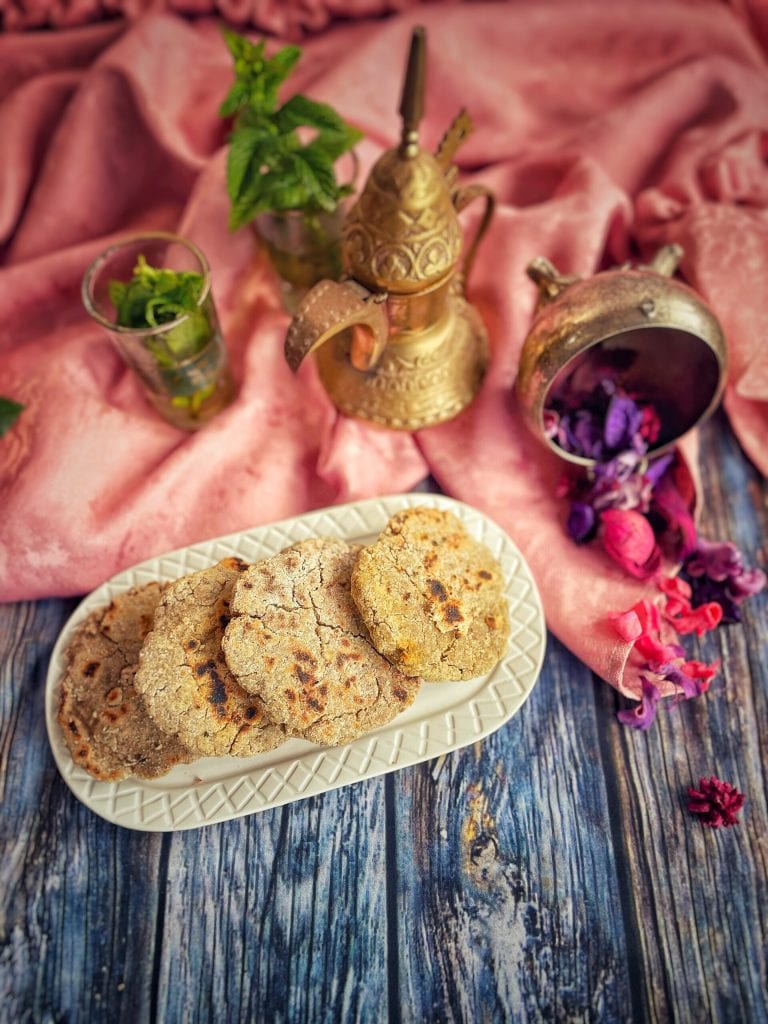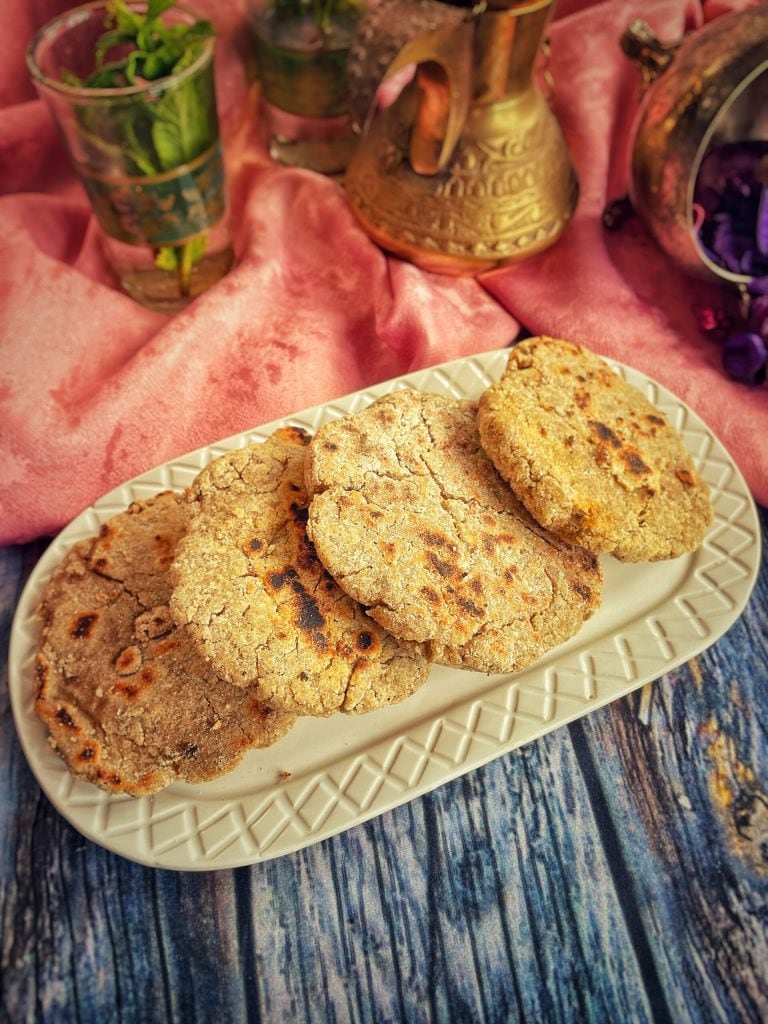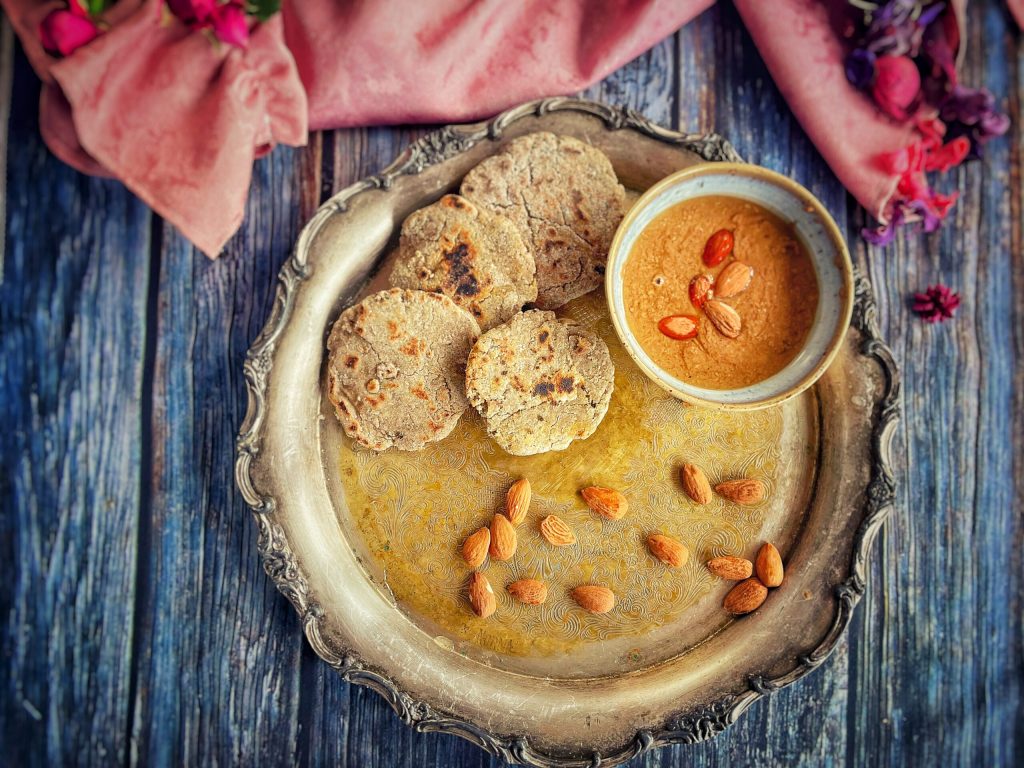Harcha (in Arabic means “rough”) is a semolina cake originating from Morocco, but it is also often found in Algeria, where it is called “harchâya”, although the recipe requires two different granulometries of semolina: medium and fine.
The semolina is mixed with butter, milk or water with the addition of yeast.
The dough is cooked on a hot griddle or in a pan.
In the northern region of Morocco, it is also called “mbesses” and instead of milk, buttermilk or yogurt diluted with water is used.
Harcha is commonly spread with honey and butter, or amlou, and served with mint tea during breakfast or as a snack if stuffed with cheese.
It is also one of the breads consumed during Ramadan.

- Difficulty: Easy
- Cost: Economical
- Rest time: 15 Minutes
- Preparation time: 10 Minutes
- Portions: 8 pieces
- Cooking methods: Griddle
- Cuisine: Moroccan
- Seasonality: Ramadan, All seasons
Ingredients
- 2 cups semolina (fine)
- 2 tablespoons sugar
- 2 teaspoons baking powder
- 5 tablespoons butter
- 3/8 cup milk
- to taste salt
Preparation
In a bowl, combine the semolina, sugar, salt, and baking powder and mix.
Add the melted butter and mix until a sandy consistency is obtained.
Add the milk and mix for a minute.
Let the dough rest for 15 minutes at room temperature (allowing the semolina to absorb the butter and milk).
Sprinkle the work surface with some semolina.
Flatten the dough with your hands and cut out circles using a cookie cutter or a large glass.
Heat a non-stick pan over medium heat and cook each harcha on both sides for 3-4 minutes per side.
Serve hot or warm.

The fine semolina most suitable for the recipe is this one, which you can purchase online. However, you can use the classic Italian stone ground semolina.
The fine semolina most suitable for the recipe is this one, which you can purchase online. However, you can use the classic Italian stone ground semolina.
VIDEO RECIPE:
You can find the video of the recipe HERE on my Instagram profile.
What is amlou?
Amlou, or amlu, is a spread made from almonds, honey, and argan oil, originating from the Amazigh region of Souss, in southern Morocco, often served at breakfast or during afternoon tea, accompanied by traditional bread such as msemmen, baghrir or harcha.
You can find the recipe on the blog.

